History
The Formative Years
The roots of the Episcopal Church in Sarasota began in the late 1880s. Colonel Benjamin Coachman, a lay reader, conducted services from the Book of Common Prayer while working for the Florida Mortgage and Investment Company, which held most of the property in the town. Sir John Gillespie, president of the British company, as well as the Archbishop of Canterbury were among the investors in the firm. J. Hamilton Gillespie (1852-1923), son of Sir John Gillespie, was sent to Sarasota in 1886 to manage the company’s holdings. In 1887, Gillespie, a Scottish Presbyterian, read the Episcopal funeral service for Tom Booth, one of the remaining Scottish colonists.
As more Episcopalians moved into the developing community, they worshipped in a variety of places: a boarding house, a common room of the Belle Haven Hotel, the Grable Building, the Methodist Church, and in the parlor of the Gillespie home on Palm Avenue. In 1888, Gillespie was confirmed into the Episcopal Church by Bishop Edwin Gardner Weed. In 1896, Gillespie was appointed as a lay reader.
Colonel and Mrs. E. W. Morrill, longtime Episcopalians from Biloxi, Mississippi, arrived in Sarasota in 1900 and became staunch supporters of the church. As head of the Missionary Jurisdiction of South Florida, Bishop William Crane Gray visited Sarasota in 1902. He wrote in his diary that he was “much pleased with the good work done and the prospect of more to come.” That same year, the little fishing village of Sarasota was incorporated as a town.
As the number of worshippers grew, in 1904, Gillespie used the large back yard of his home on South Palm Avenue to build the first church building, a rough-hewn Guild Hall. The rustic building was similar to other church structures in town, and it fulfilled one of the requirements needed to become a mission in the Missionary Jurisdiction of South Florida. The Episcopalians, now numbering 26, signed the application for mission status. They became an organized mission called “Church of the Redeemer,” named after Mrs. Morrill’s home church in Biloxi.
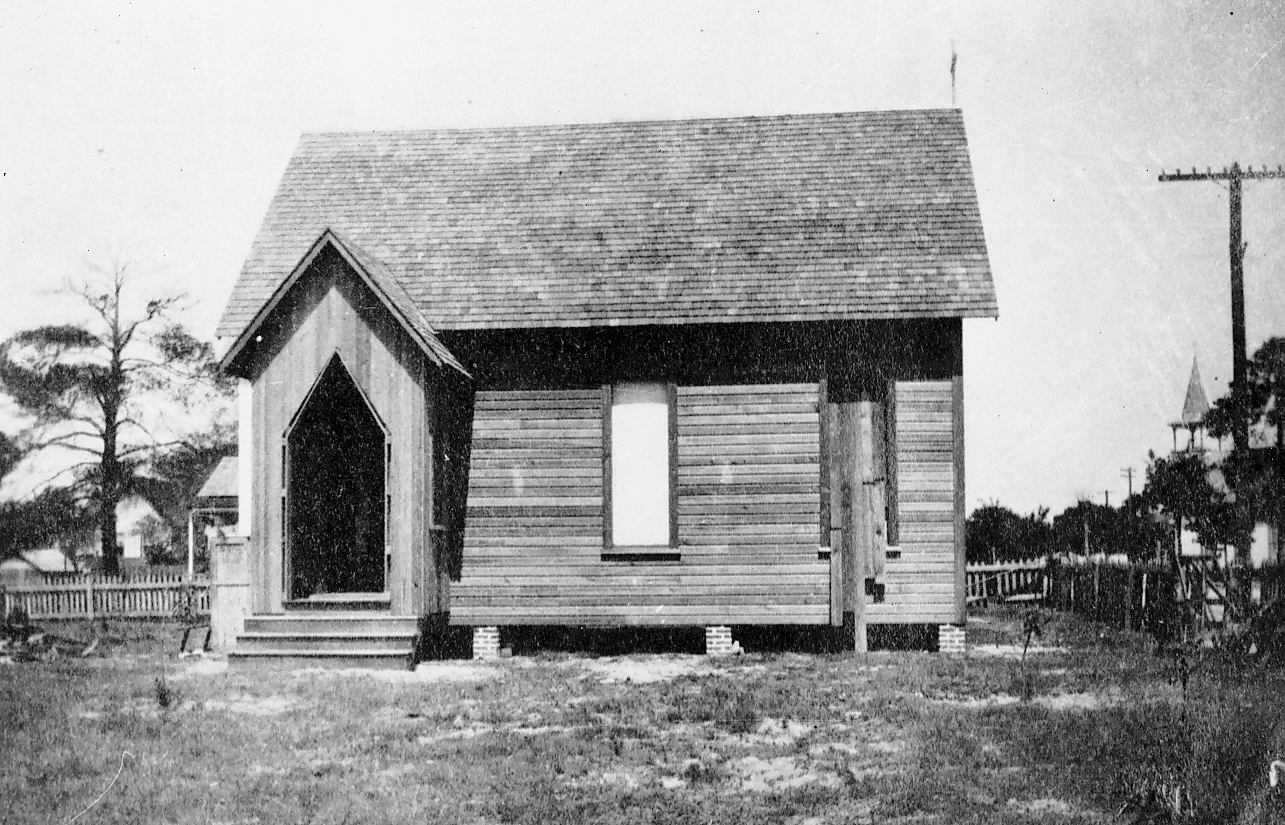
The earliest known photograph (circa 1904) of Church of the Redeemer. It shows the guild hall in Gillespie’s backyard at Main Street and Pineapple Avenue.
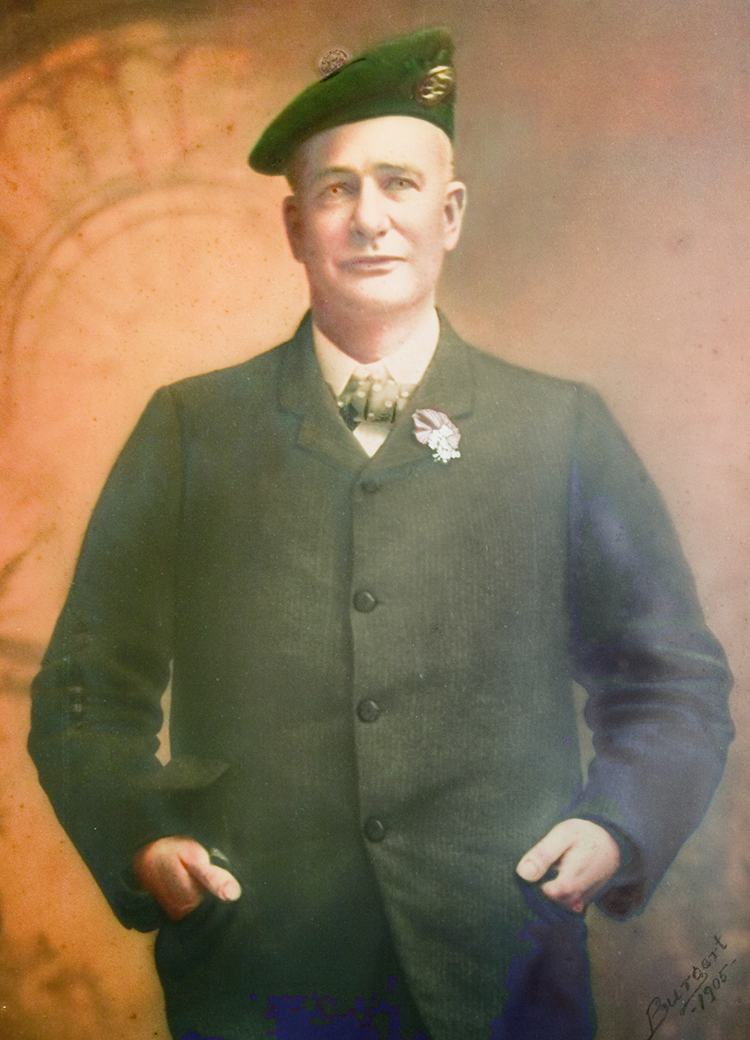
John Hamilton Gillespie was one of Redeemer’s founders and Sarasota’s first mayor.
The Mission Years
Leadership in the mission’s first decade was largely by lay people, with visits from the clergy of Christ Church, Bradenton; missionary priests; and the Archdeacon for the Gulf Coast along with annual visits by the bishop. From Redeemer’s beginning, various retired clergy, some of whom were winter residents, presided at Eucharistic services.
One of these retired clergymen was Dr. Francis Burdett Nash, who became the first full-time (during the winter) priest-in-charge of the small mission in 1915. He led the growing congregation with the assistance of Gillespie, Dr. Jack Halton, and other lay people.
By this time, there was a need for a significant expansion of the small guild hall. In 1905, the building had been moved to the northeast corner of Palm Avenue and Strawberry Avenue (the latter now known as Ringling Boulevard). Services there were often interrupted by the noise of train engines backing the freight cars for loading at the fish houses nearby.
The building was moved again in 1910 to the corner of Orange Avenue and Morrill Street (a street appropriately bearing the name of the founding mother of Redeemer, Mrs. Morrill).
The church’s small appearance belied the remarkable number of congregants it could hold. With the addition of a plain wooden cross that surmounted the two front gables and a vaguely gothic-looking west opening, the building was finally identifiable to outsiders as a church. Nash, who had long been accustomed to building churches on the frontier, personally supervised the project.
The Diocese, women’s guild, and increasingly prosperous parishioners, including part-time winter residents, financed the church. Ten years later, under Nash’s leadership, the building was moved to the center of the lot to make room for future expansion. A grateful congregation built the first church rectory for Nash and his wife at 127 Morrill Street.
Before his death in January 1925, Nash initiated the building of a parish hall on the church’s southeast corner, reflecting the increasing need for Christian education and a meeting place for fellowship.
That same year, the Reverend John Neighbor, Nash’s successor, was instrumental in the formation of the first full vested choir. This was not, however, the beginning of the church’s music program, which had started with a quartet before Redeemer had achieved mission status. The quartet was led by Dr. Jack Halton and included his brother, Dr. Joe Halton.
Members of the church, even from the early days of worship in the Gillespie home, sang a variety of hymns. While they sometimes sang a capella, Nash would often accompany them on harmonium or piano. In recognition of his musical abilities, the first organ was dedicated in his honor.
The music in those early days, according to several contemporary accounts in the Sarasota Times newspaper, was extraordinary, attracting music-lovers to services and community concerts. People driving by would slow down to hear the organ music wafting from the open door.
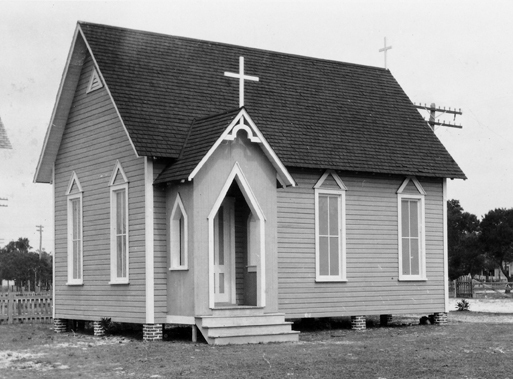
The original church’s second location was at the corner of Palm and Strawberry, seen here in 1906.
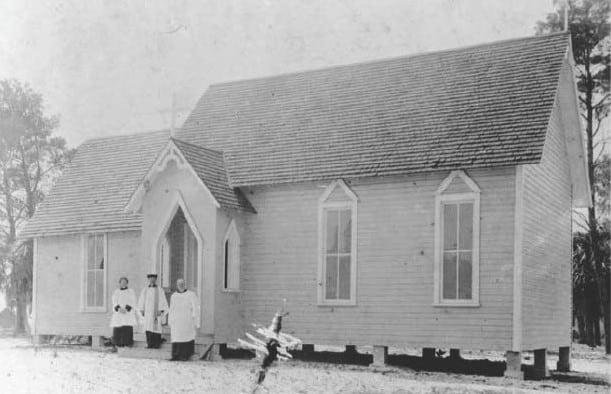
Redeemer’s church building was moved in 1910 to the corner of Orange Avenue and Morrill Street. From left to right: Dr. Jack Halton, Bishop William Crane Gray, and Colonel John Hamilton Gillespie
Achieving Parish Status
Clergy in the 1920s and 1930s, including Heber W. Weller and G.L.C. Thomas, brought valuable gifts of ministry to the congregation and community.
Thirty years after being established as a mission in the Diocese of South Florida in 1904, Church of the Redeemer was admitted as a parish on April 11, 1934.
The Reverend William Lillycrop was officially the first Rector, now that Redeemer was a parish and no longer a mission. He was an energetic, active priest who was particularly vigorous in promoting education and small groups within the church. Lillycrop launched a Young People’s Service League, started a Junior Daughters of the King, organized a Cub Scout pack, and founded the Churchman’s Club. He also helped organize an Episcopal men’s group, which continues today as Men of Redeemer.
Women at Redeemer have been organized under various names since 1904: the Ladies Guild, the Women’s Guild (1906), the Church Service League (1922), the Women’s Auxiliary (1932), and Episcopal Church Women (1958). Women raised money (starting with the guild hall, the first church building), taught children through a variety of ministries, maintained the church, and provided vestments, linens, candles, and flowers. The Altar Guild, made up of five committees, has always been one of the largest and most active organizations in service to Redeemer.
During this time, Redeemer nurtured the creation of an Episcopal mission in Venice called St. Mark’s. This was the genesis of the role played by Redeemer as “Mother Church,” supporting the development of new missions, which would also eventually include St. Boniface on Siesta Key, All Angels by the Sea on Longboat Key, St. Wilfred in east Sarasota, Church of the Nativity in northeast Sarasota, St. Margaret of Scotland in southeast Sarasota, Church of the Holy Spirit in Osprey, Church of the Good Shepherd in Venice, and St. Mary Magdalene in southern Manatee County.
Throughout World War II and the rest of the 1940s, John Harvey Soper served as Rector (1942-1952). Redeemer served those stationed in the area during the war as well as the families of those on active military duty elsewhere. After the war, it became clear that the little church could no longer accommodate the growing congregation, so the vestry decided to build a new church on recently acquired property overlooking Sarasota Bay.
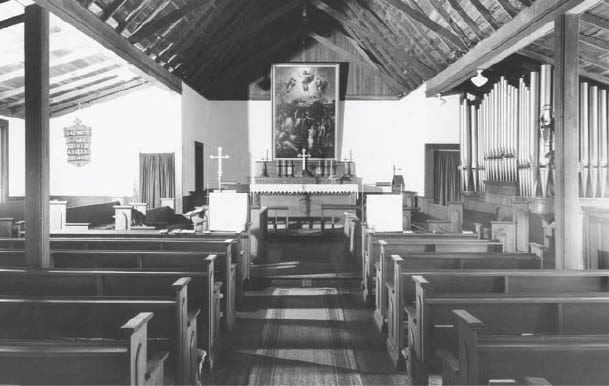
Redeemer’s first pipe organ was installed in the late 1920s. The sanctuary centerpiece, a copy of Raphael’s The Transfiguration of Christ, now hangs on the north wall of the Chapel of the Transfiguration.
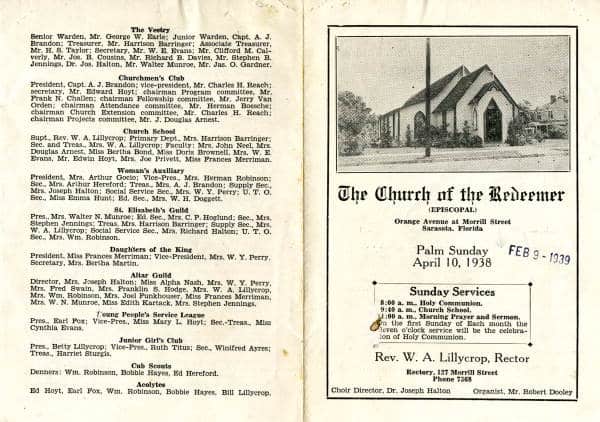
A pamphlet from Palm Sunday on April 10, 1938 shows the church offered Holy Communion at 8 a.m., Church School at 9 a.m., and Morning Prayer and a Sermon at 11 a.m. The Rev. W. A. Lillycrop was Rector of Redeemer at the time.
Moving to Palm Avenue
In 1947, Redeemer formed a building committee and building fund. The parish employed arguably the best church architecture firm available, Cram and Ferguson of Boston, one of the firms that designed the Cathedral of St. John the Divine in New York City.
Funding the building was a community effort. There was great enthusiasm—a quarter of the money was raised before the campaign actually began. A brochure appealing for funds went out to Redeemer members, “visitors in our midst enjoying the hospitality of this church,” and “all good citizens of Sarasota” who desired “improvement in our city.” The writer of the brochure concluded that “the soul of a city is represented by its churches. The new Church of the Redeemer promises to fulfill a mission in this direction, as it beautifies Sarasota, it serves the religious life of the community, and it stands to the glory of God in our midst.”
Support came from Episcopal Church Women, parishioners, the Diocese, community members, and proceeds from the sale of the old church building. A significant gift that kicked off the building campaign was made as the result of a benefit performance by the Ringling Bros. and Barnum & Bailey Circus, which wintered in Sarasota.
Parishioners broke ground on the new church on Palm Avenue in 1948. The location was near the site of the original Gillespie home, where a small group of faithful Episcopalians had gathered around the dining room table to worship in the 1880s.
In 1949, 45 years after Redeemer became a mission church, the cornerstone was laid for an impressive modified-Gothic-style church. The congregation, now numbering 917 members, celebrated its new church home at the first service held at 222 South Palm Avenue with the praying of the Great Litany on the First Sunday in Lent on March 17, 1950.
Clear glass jalousie windows lining the nave were open to catch breezes off the Bay, giving parishioners some relief from the heat. The pulpit, baptismal font, eagle on the lectern, high altar, chapel altar, and reredos (the carved wooden screen now above the altar in the Chapel of the Transfiguration) were carefully moved from the old church into the new one. The new church was an impressive waterfront beacon, visible from the bay and many parts of town.
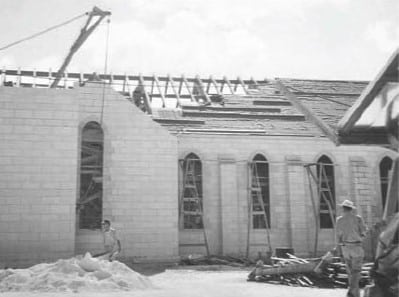
Ground was broken on Palm Avenue in 1948 for the new Church of the Redeemer. Construction was completed in 1950.
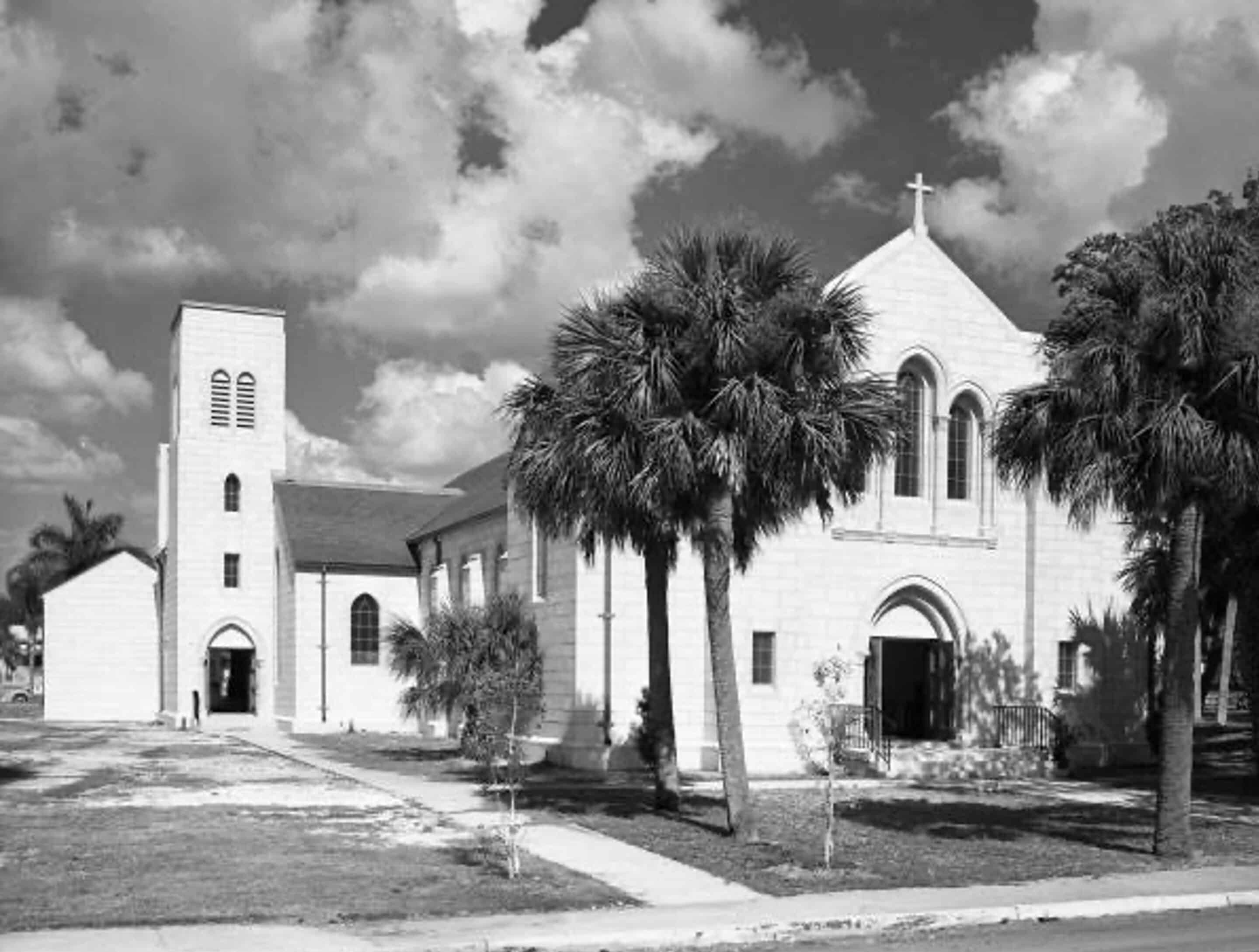
The newly constructed Church of the Redeemer at 222 S. Palm Ave., photographed by world-renowned photographer Joseph Janney Steinmetz on September 21, 1950.
A Growing Downtown Presence
In 1952, Soper, who guided the church through the tumultuous war years, post-war boom, and construction of the new church, died suddenly. Succeeding Rectors included the Reverend William Moses, who served until he was elected to be a Suffragan Bishop of the Diocese of South Florida.
The Reverend Frank Butler’s brief tenure as Rector (1956-1959) was marked by his interest in Christian education and mission development. He helped lay the groundwork for several new mission churches, including St. Boniface and St. Wilfred.
The Reverend Paul Reeves, who became Rector in 1959, tended to the spiritual lives of parishioners and made substantial improvements to the furnishings of the church. The most dramatic change was the installation of stained-glass windows that replaced the jalousie windows in the nave. The final large change was beginning the installation of a new slate floor. After six productive years at Redeemer, Reeves was called to another parish in south Florida and later was consecrated as the seventh bishop of the Diocese of Georgia.
The Reverend Thomas Fitzgerald, who had been an assistant to Reeves, was elected his successor in 1965. Continuing Reeves’ focus on the liturgical renewal movement, Fitzgerald expanded service offerings to include daily Morning Prayer, Evening Prayer, and daily Eucharist. Following the addition of needlepoint cushions at the high altar rail under Reeves, the needlepoint guild worked with Fitzgerald to design and complete 120 kneelers in the nave as well as kneelers for the baptistry and chapel. In the fall of 1967, the Hope Bell Tower, with its five German cast bronze bells, were blessed by Suffragan Bishop William L. Hargraves.
A highlight of Fitzgerald’s tenure was the visit of then-U.S. President Gerald Ford and his wife, Betty. They attended a Sunday service at Redeemer on February 29, 1976. A small brass plate identifies the fifth pew on the lectern side as the “Presidential Pew.”
The Reverend Jack Leo Iker, who first served as an assistant priest appointed by Father Fitzgerald, was made Rector in 1978, a turbulent time in the national church and Diocese. Iker was active in the Diocese, becoming president of the Standing Committee and carving out clear positions on several issues. In the early days of his tenure, the needlepoint cushions were largely completed, and a service of dedication and blessing was held on All Saints’ Day. After leaving Redeemer in 1993, Iker later became Bishop of the Episcopal Diocese of Fort Worth, Texas.
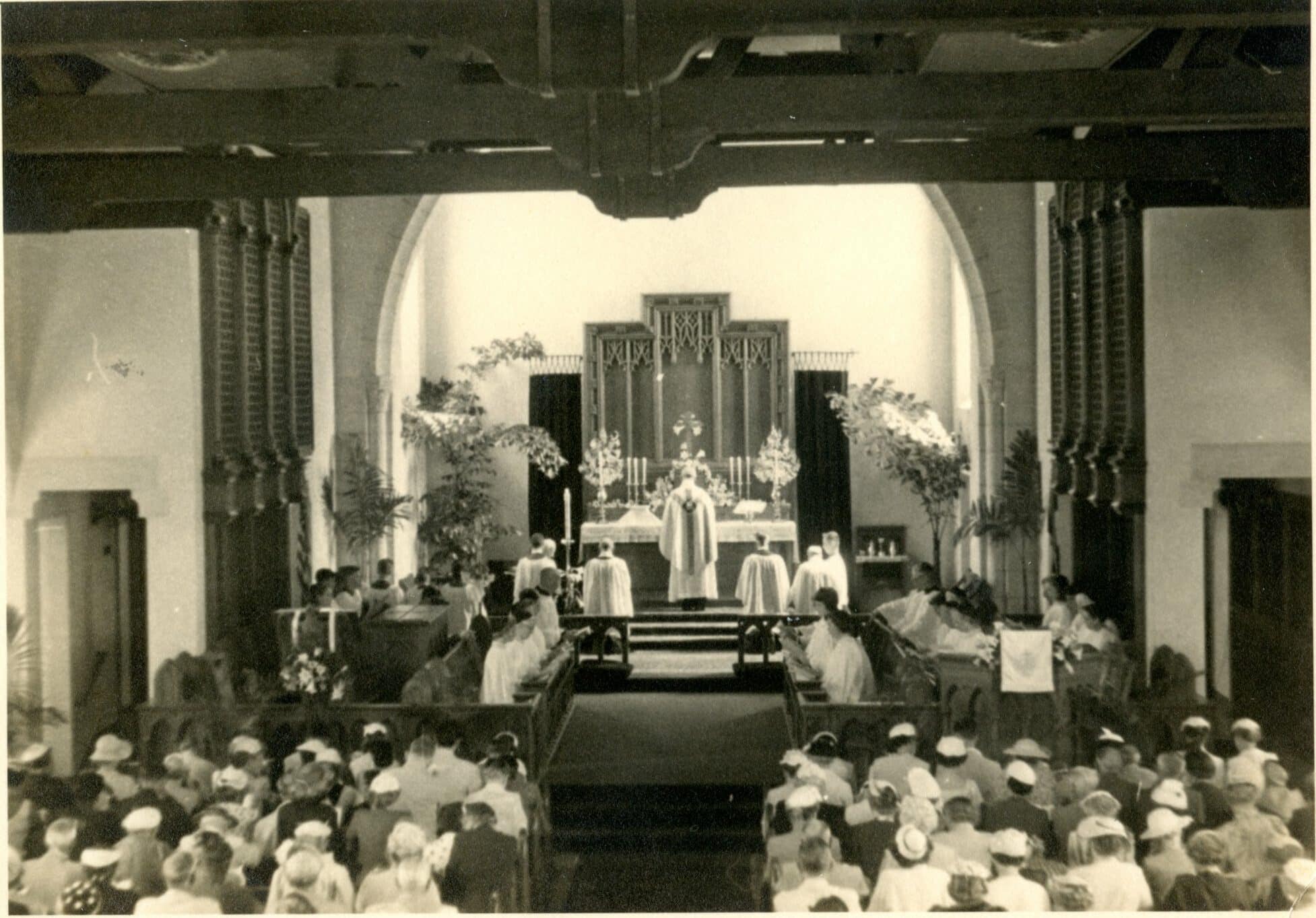
Redeemer experienced a post-war boom in the 1950s, and pews were packed during Easter services in 1954.
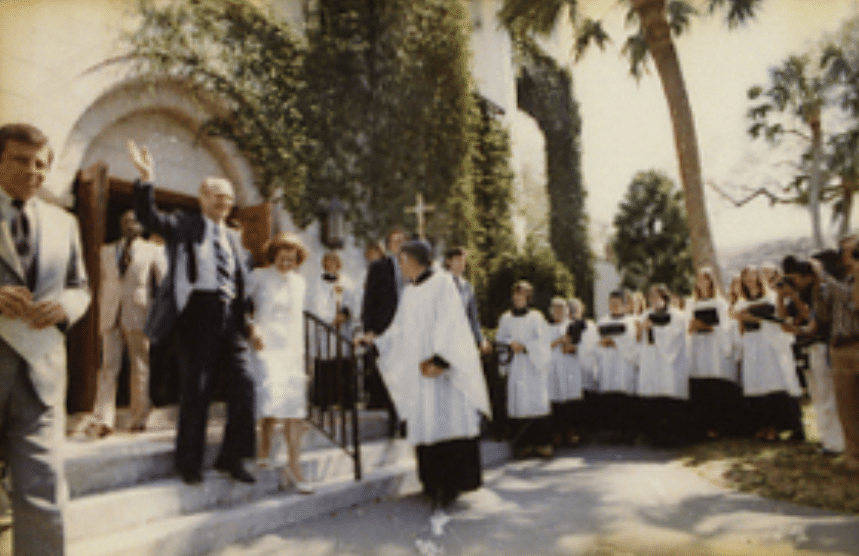
U.S. President Gerald Ford and his wife, Betty, attended a Sunday service at Redeemer on February 29, 1976. A brass plate identifies the fifth pew on the lectern side as the “Presidential Pew.”
Celebrating Redeemer’s Centennial
The Reverend Fredrick Robinson was named Rector in 1994. He oversaw a period of tremendous growth and outreach, from expansion of the youth program to the addition of staff and clergy to better serve an expanding congregation. Under his watch, there were many significant changes to the church and grounds. One of the most noticeable physical improvements was the restoration of the original ceiling in the nave, following the removal and replacement of the air handling system. A new education wing and sacristy addition were constructed in 1997.
During Robinson’s tenure as Rector, Redeemer also built a veranda adjacent to Gillespie Hall, installed three stained-glass windows in the balcony, and added a mosaic of the Compass Rose—the emblem of the worldwide Anglican Communion—under the Hope Bell Tower.
Redeemer’s strong musical tradition continued under the long-term leadership of Organist-Choirmaster Dr. Ann Stephenson-Moe and the late Dr. Daniel Moe, who served as composer in residence. Stephenson-Moe has the distinction of having the longest tenure of any employee at Redeemer—46 years (1974-2020). Under her direction, the scope of the music program grew exponentially. In addition to organizing two adult choirs and several children’s choirs, Stephenson-Moe hosted musicians from around the world at Redeemer.
During Redeemer’s centennial celebration in 2004, a new Nichols & Simpson organ was installed, and it has further enriched the musical heritage of the parish. In November 2020, following Stephenson-Moe’s retirement, Sam Nelson became Redeemer’s Organist-Choirmaster. Nelson has continued the tradition of hosting organists and other talented musicians at services and music events throughout the year.
Also as part of Redeemer’s centennial year, the parish hall was renovated and renamed Gillespie Hall in honor of founding member John Gillespie.
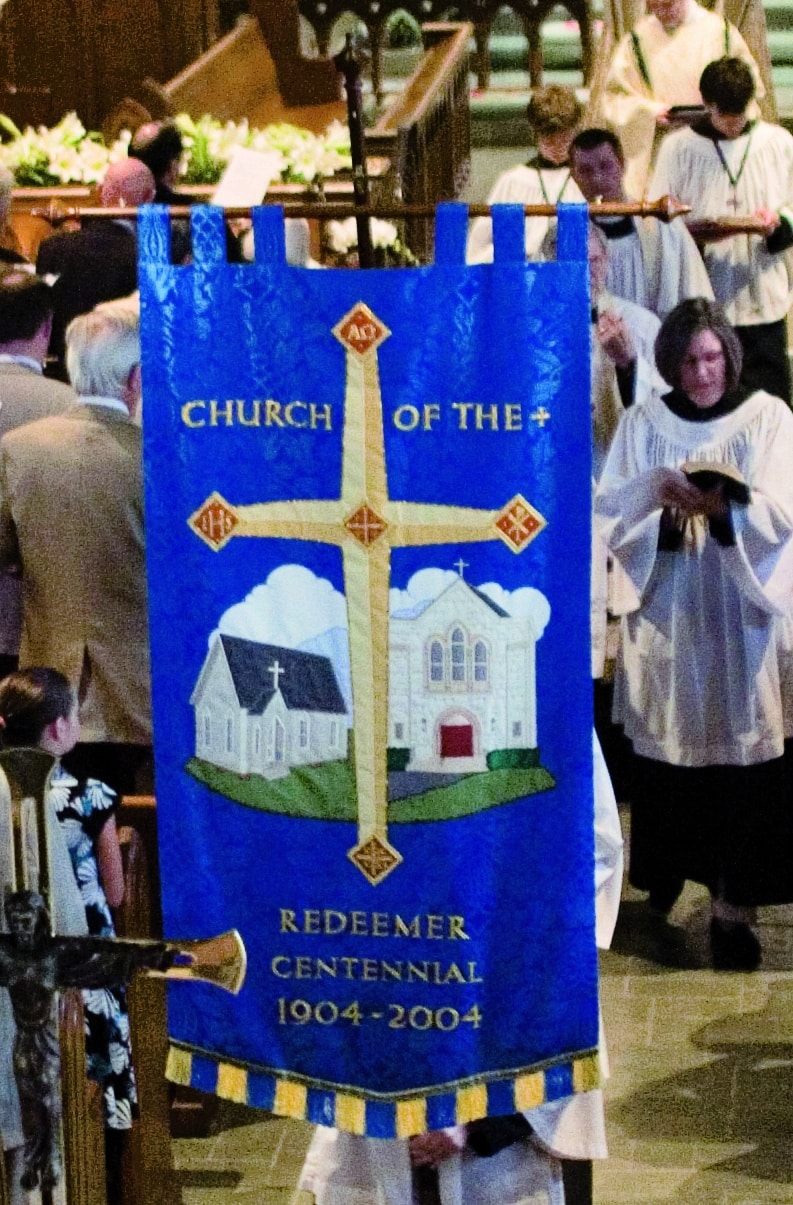
The Centennial Banner was commissioned in 2004 in recognition of Redeemer’s 100 years as an Episcopal church. The banner was custom made by Whipple of England.
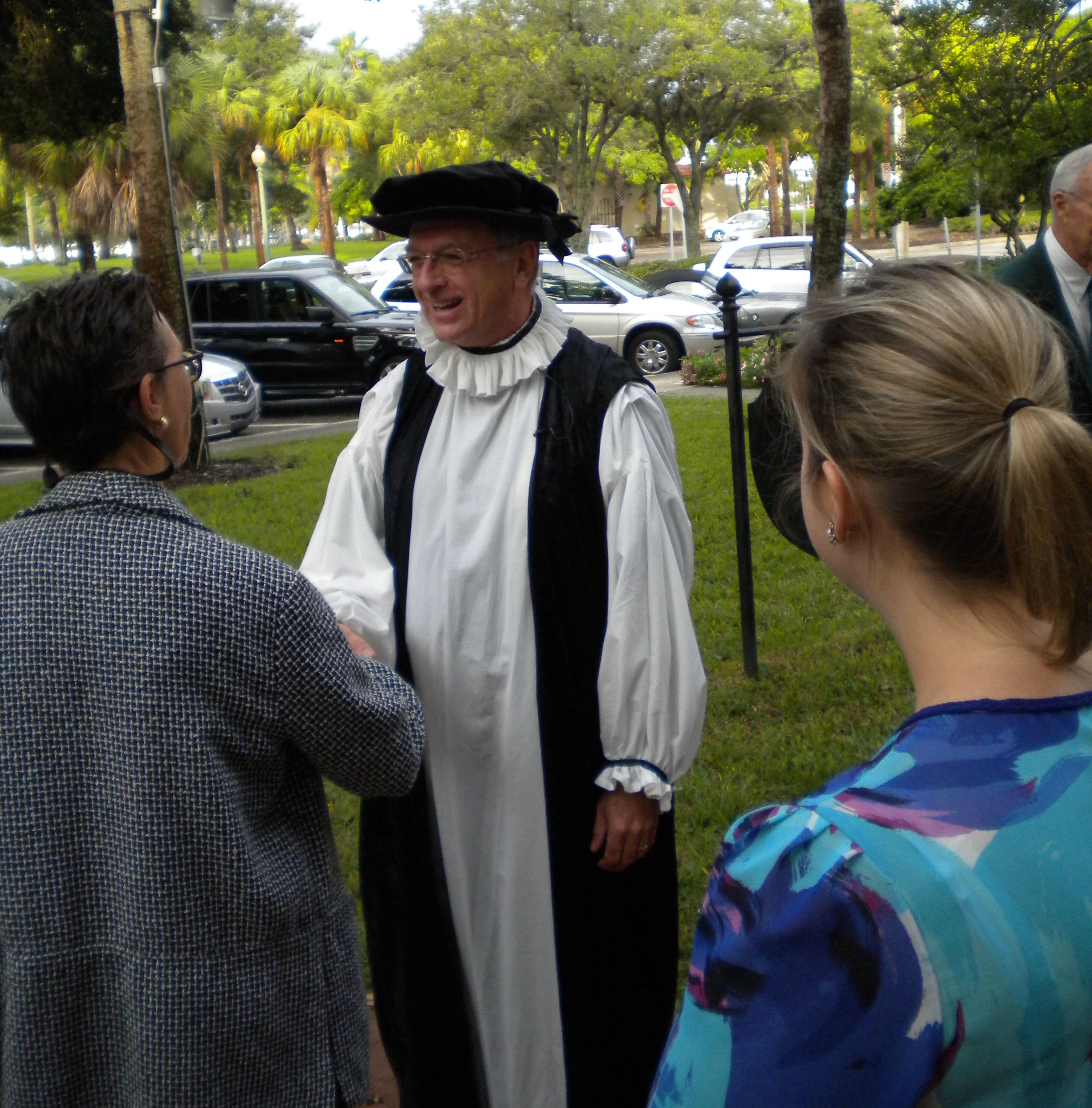
During Redeemer’s centennial celebrations in 2004, Fr. Fredrick Robinson and others dressed in period attire from 1904. To mark the occasion, priests and parishioners walked around the downtown area and stopped at each location the church used to be.
Poised for the Future
In 2013, in a service held at Redeemer, Charleston David Wilson was ordained an Episcopal priest. He served as Parish Curate, Priest Associate, Senior Priest Associate, and Priest-in-Charge before being elected Rector in 2021.
A capital expansion campaign began in early 2017 to raise money for additional facilities to handle the rapidly growing congregation. One of the main results is the three-story Robinson Center, named after Fred Robinson. Redeemer held a groundbreaking for the building in May 2018 and dedicated it on December 8, 2019.
In recent years, Redeemer has seen a surge in new members joining the parish. Several new staff positions, including a Welcome Coordinator, have been added to accommodate the increasing size of the parish, its 100-plus ministries, and the church’s widespread community outreach efforts. Redeemer stands poised for even greater growth in the coming years, with ambitious plans to strengthen the faith of current parishioners as well as increase the number of people who call Redeemer home.
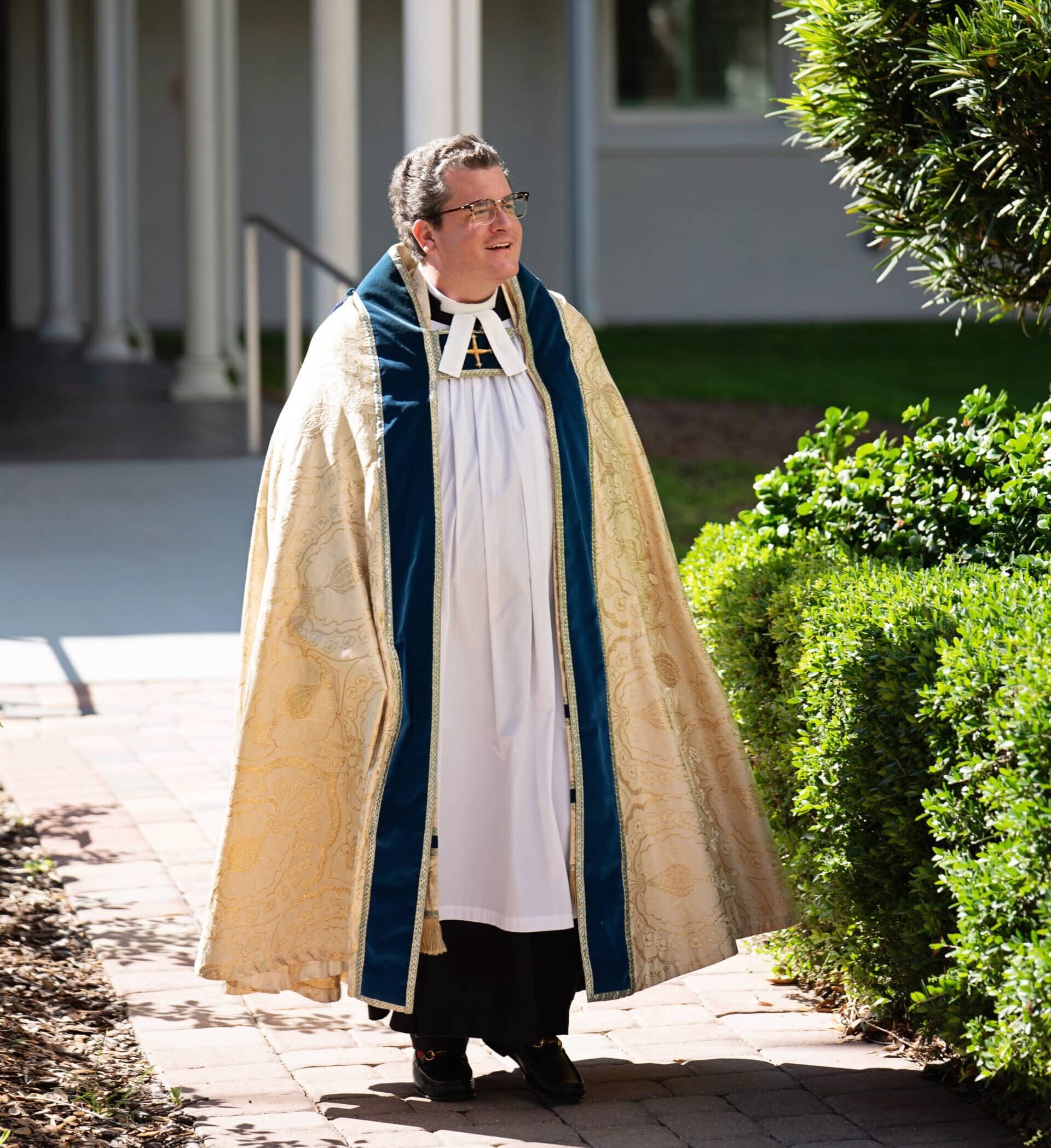
Fr. Charleston Wilson was elected Rector of Redeemer in 2021.
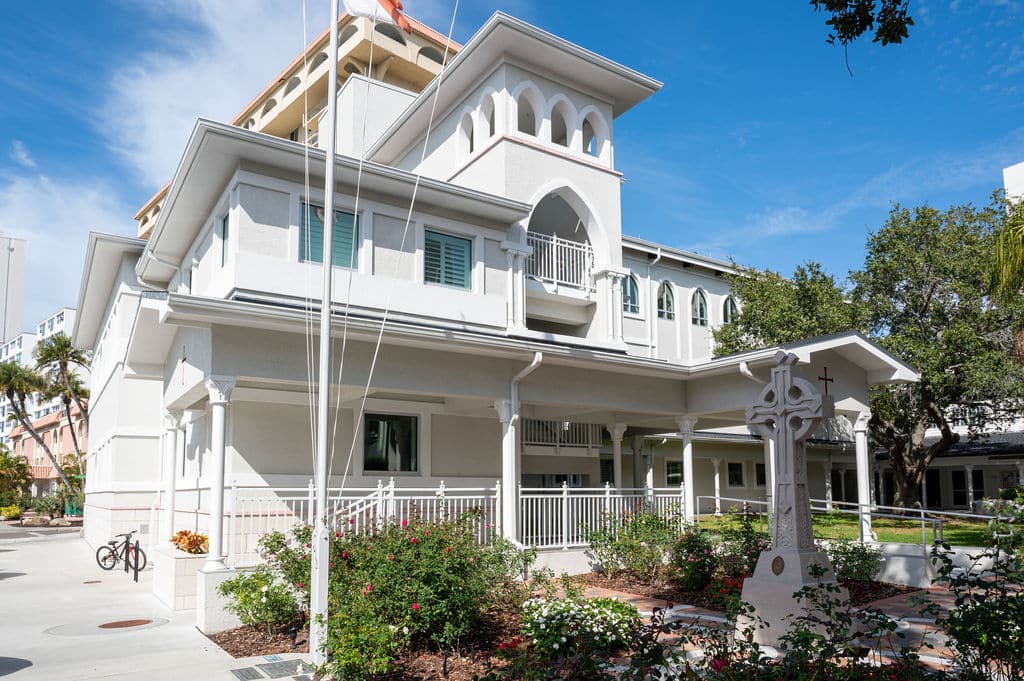
The three-story Robinson Center, named after former Rector Fr. Fred Robinson, was dedicated in December 2019. The building houses the parish office, Sunday School classrooms, and Goewey Hall, a large meeting and event space on the third floor.